The symbol for Major 7th chords is "maj7"
![]()
Last time we covered 7th chords. Today we're going to learn major 7th chords -- only 1/2 step different, but a HUGE difference in the sound and how they are used. 7th chords are extremely common -- used in all kinds of music. Major 7th chords are less common, and are generally used as "color chords" to create a certain sound, a certain mood.
To form a major 7th chord, simply add the 7th degree of the scale to the major triad. For example, you know that the C major triad is C - E - G. You also know that the C scale has 8 notes, the 7th of which is B. So by adding B to the C major triad, we create a Cmaj7 chord:
A Major 7th Chord = Root - 3rd - 5th - 7th
Here's what Major 7th chords look like on the staff: (Remember that accidentals carry over in the same measure!)
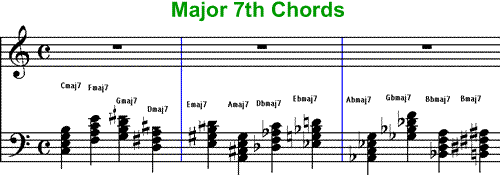
Major seventh chords
appear in lead sheets as any of the following chord symbols:
![]()
And here's what they look like when played with your left hand on the keyboard:
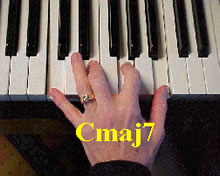 |
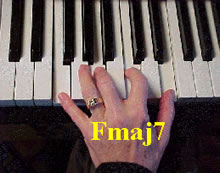 |
 |
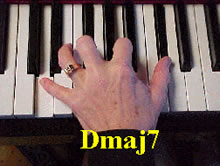 |
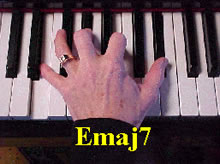 |
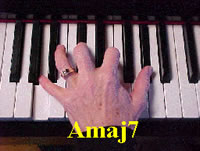 |
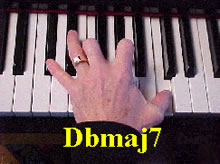 |
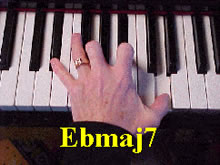 |
 |
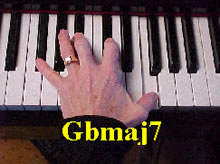 |
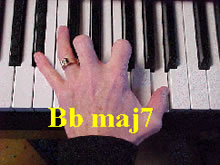 |
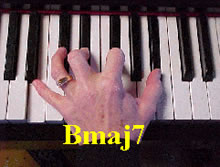 |
As usual, now it's up to you. Play each maj7th chord in root position, then 1st inversion, then 2nd inversion, then in 3rd inversion (the maj7th will be the lowest note of the chord) Play each chord up and down the keyboard for at least 2 octaves -- maybe 3 octaves. Play them with your left hand, then play them with your right hand. Then play them hands together.
Go through all 12 major chords, inverting every one. Then go through all the 12 minor chords, inverting each one up and down the keyboard -- hands alone, then hands together. Then go through all 12 diminished chords, inverting each one up and down the keyboard -- each hand alone, then together. Then play the 12 augmented chords, up and down the keyboard. Then skip around from major to minor to diminished to augmented, etc.
Then add minor 6th chords to your repertoire of chords. They are shown in root position above, but you know that you can turn them upside down 'till the cows come home -- invert them -- so go to it!
And then add 7th chords and their inversions....and finally, add the maj7th chords we've learned today.
Do you feel like you're getting a handle on chords yet? You ought to -- I know we're going slowly, but chords are SO important that you absolutely MUST master them if you are ever going to play the piano like you hope to!
So here's our revised chord scorecard:
12 major + 12 minor + 12 diminished +
12 augmented + 12 major 6th + 12 minor 6th +
12 7th chords + 12 maj7th chords
and 3 or 4 inversions of each mean you can now play
0ver 350 chords!
 Way
to go!
Way
to go!
Next lesson we will add 12 more chords to our growing list of chords we can play by adding 9th chords to our stash. (Actually 48 more chords, since each 4-note chord such as a 9th can be inverted 4 ways -- root position, 1st inversion, 2nd inversion, and 3rd inversion - and if your hand is big enough -- mine isn't -- 4th inversion.)

